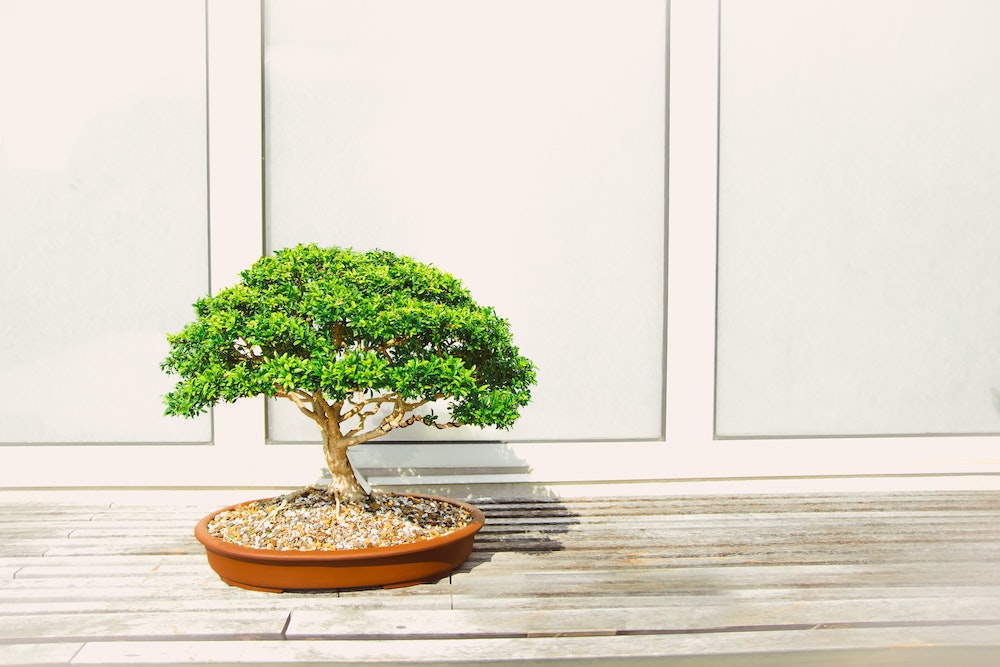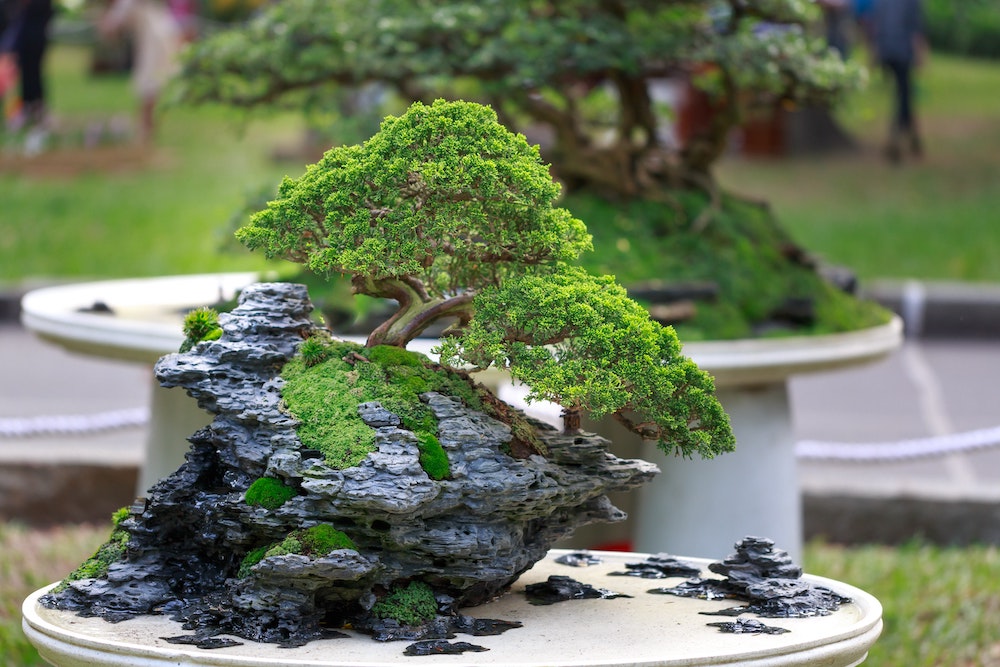Learn about thickening a bonsai trunk with these effective techniques. Discover the best methods for growing a strong and sturdy bonsai tree.
Bonsai trees are some of the most beautiful and delicate plants in the world. They require constant attention and care to thrive and develop into mature trees that are a joy to look at. One of the most important features of a bonsai tree is the thickness of the trunk. A thick trunk can make a bonsai tree look more mature and majestic. In this article, we will discuss some techniques for thickening a bonsai trunk.
Select the Right Species of Bonsai Tree
One of the most important things to consider when trying to thicken a bonsai trunk is the species of tree you are working with. Some species of trees naturally have thicker trunks than others. For example, pine and maple trees tend to have thicker trunks than juniper or cherry trees.
When choosing a bonsai tree, look for a species that is known for having thick trunks. This will make it easier to achieve the desired result. Also, keep in mind that different species of trees grow at different rates. Some species may take longer to thicken their trunks than others.
Proper Placement of Bonsai Tree
Another important factor in thickening a bonsai trunk is proper placement of the tree. Bonsai trees need to be placed in a spot where they can receive plenty of sunlight and good air circulation. If a bonsai tree is placed in a shady area or in a location with poor air circulation, it will not grow as quickly or as thickly.
When choosing a location for your bonsai tree, consider placing it near a window that receives plenty of sunlight. Alternatively, you can place your bonsai tree outside during the warmer months, as long as it is protected from strong winds and direct sunlight.
Repotting the Bonsai Tree
Repotting your bonsai tree can also help to thicken its trunk. When a bonsai tree is repotted, it is given fresh soil and more space to grow. This can encourage the tree to grow thicker roots and a thicker trunk.
When repotting your bonsai tree, be sure to choose a pot that is slightly larger than the one it was in before. This will give the tree more room to grow. Also, be sure to use fresh soil that is appropriate for the species of tree you are working with.
Pruning Techniques
Pruning is another technique that can be used to thicken a bonsai trunk. By pruning certain parts of the tree, you can direct the growth of the trunk and encourage it to grow thicker.
One common technique for thickening a bonsai trunk is to prune the top of the tree. By cutting off the top of the tree, you can encourage the tree to grow thicker lower branches. This will make the trunk appear thicker and more mature.
Another pruning technique that can be used to thicken a bonsai trunk is to prune the roots. By removing some of the tree’s roots, you can stimulate the growth of new roots. This will encourage the tree to grow thicker and more stable.
Wiring Techniques
Wiring is another technique that can be used to thicken a bonsai trunk. By wrapping wire around the trunk, you can direct the growth of the tree and encourage it to grow thicker in certain areas.
When using wire to thicken a bonsai trunk, it is important to be gentle and careful. If the wire is wrapped too tightly, it can damage the tree and hinder its growth. Also, be sure to remove the wire before it begins to cut into the bark of the tree.

Thickening a bonsai trunk requires a combination of techniques, including proper species selection, proper placement, repotting, pruning, wiring, fertilizing, trunk chop, and patience.
Fertilizing Techniques
Fertilizing is another technique that can be used to thicken a bonsai trunk. By providing the tree with the nutrients it needs, you can encourage it to grow thicker and more quickly.
When fertilizing a bonsai tree to thicken its trunk, it is important to choose the right type of fertilizer. Bonsai trees have specific nutrient needs, and using the wrong fertilizer can actually harm the tree.
There are many types of fertilizers available for bonsai trees, including organic and synthetic options. Organic fertilizers are derived from natural sources, such as bone meal or fish emulsion, and are often slower-release than synthetic fertilizers. Synthetic fertilizers are made with chemical compounds and can provide a quick boost of nutrients to the tree.
It is also important to fertilize the bonsai tree at the right time. In general, it is best to fertilize a bonsai tree during the growing season, which is typically from spring to early fall. During the dormant season, which is usually in the winter, fertilizing should be avoided.
Trunk Chop Technique
The trunk chop technique is a more extreme method of thickening a bonsai trunk. This technique involves cutting the tree’s trunk down to a stub and allowing it to regrow from that point.
This technique should only be used on trees that are healthy and vigorous. It is also important to choose the right time of year to perform a trunk chop, as this can affect the tree’s ability to recover.
The trunk chop technique can be risky, but it can also be very effective. By allowing the tree to regrow from a lower point, you can encourage it to grow thicker and more stable.
Using Guy-Wires
Guy-wires are an effective technique for thickening a bonsai trunk. This method involves attaching a wire to the trunk of the tree and pulling it in a particular direction to encourage growth in that direction.
Guy-wires should be used with caution, as they can cause damage to the tree if not used properly. It is important to use a soft wire and to wrap it loosely around the trunk to avoid causing damage.
Proper Watering
Proper watering is essential for the health of a bonsai tree, and it can also play a role in thickening the trunk. Overwatering can lead to root rot and other issues, while underwatering can cause the tree to become weak and stunted.
It is important to water your bonsai tree regularly, but not excessively. The frequency of watering will depend on factors such as the species of the tree, the climate, and the size of the pot. As a general rule, the soil should be kept slightly moist but not saturated.
Patience and Persistence
Finally, it is important to remember that thickening a bonsai trunk takes time, patience, and persistence. This is not a process that will happen overnight. It may take several years of careful pruning, wiring, and fertilizing to achieve the desired result.
It is also important to monitor the tree’s health and growth throughout the process. If you notice any signs of stress or disease, it may be necessary to adjust your techniques or seek the advice of a bonsai expert.
In conclusion, thickening a bonsai trunk requires a combination of techniques, including proper species selection, proper placement, repotting, pruning, wiring, fertilizing, trunk chop, and patience. By using these techniques, you can encourage your bonsai tree to grow a thick, majestic trunk that will make it a true work of art. Remember to always approach the process with care, and don’t be afraid to seek the advice of a bonsai expert if you have any questions or concerns.
- Google Analytics for Beginners: Guide to Mastering Analytics - July 28, 2023
- National SEO for Lawyers: Drive Nationwide Traffic for Your Firm - July 28, 2023
- The Power of Local SEO for Lawyers: Build Your Practice - July 28, 2023


